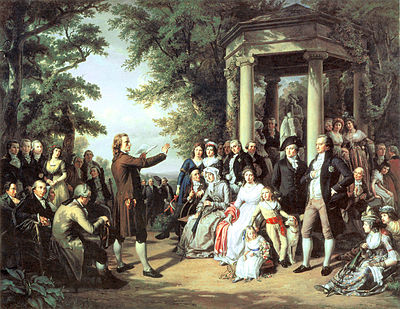by Fabio Parasecoli
from Huffington Post
I admit it, I am a shameless history nerd, and I got excited when I received the advance copy of E.C. Spary’s upcoming book, Eating the Enlightenment: Food and Science in Paris. As much as we think we know French cuisine and its past, there is always new research shedding light on aspects that are not well understood or, even worse, are misunderstood. Spary’s work continues the efforts of other important books such as Susan Pinkard’s A Revolution in Taste: The Rise of French Cuisine, Sean Takats’s The Expert Cook in Enlightenment France, Rebecca Spang’s The Invention of the Restaurant: Paris and Modern Gastronomic Culture, Amy Trubek’s Haute Cuisine: How the French Invented the Culinary Profession and Priscilla Parkhurst Ferguson’s Accounting for Taste: The Triumph of French Cuisine, just to mention a few. So much material is available that it would be easy to teach a well-sourced course on the cultural history of French food.
Spary’s volume is far from being a light read, as it mines its way through a staggering amount of memoirs, letters, books, and all sorts of documents from the budding printing industry of the decades before the Revolution. But it definitely rewards those who might decide to engage with its fascinating content. Focusing on the Parisian who’s who, Spary explores debates and cultural dynamics that eerily remind us of the way many contemporary consumers in post-industrial societies decide what and how to eat, especially those in the upper income brackets who can afford to make expensive choices.
Of course, any crude simplification should be avoided: the author emphasizes that 18th century France was beginning to develop as a consumer society, in particular thanks to colonial products such as sugar and coffee. This epochal transformation was the cause of widespread unease and preoccupation: were French citizens going to be the same, even when ingesting exciting foreign substances and indulging in luxuries that were becoming increasingly affordable? Now, we live at a time when the consumption of exotic products and novelties is a daily occurrence and whole industries are based on our desire to experiment and try new stuff all the time. Also, 18th century upper class French consumers did not have to deal with global corporations, brand names, and the pervasive marketing that shape today’s food culture — one of the main reasons behind the renewed interest in traditional and so-called “authentic” foods.
Nevertheless, just like at the time of the philosophes, ingestion still functions as a metaphor for the cultural and political self. Standards of taste in the civic sphere were not only determined by fashion and practices, but also by political discussions, clashing scientific theories, and the attitude of public intellectuals. The connoisseur, who became a visible Parisian figure in the period that Spary explores, not only displayed expertise, but also claimed forms of authority and revealed specific approaches to the mind and its relationship of the body. Individuals modeled their behaviors based on scientific information, media, culture, personal preferences, popular advice , and competing ideals about health and well-being.
Then as now, dietary preferences can be used to distinguish us from one another, underlying our own uniqueness and personality, and it is possible to express political and social ideals by deciding to eat specific things. When we opt for products labeled as local, organic, sustainable, and fair trade, we are actually participating in political projects, just like the eighteenth century Parisians could express their discontents with the absolutist regime of the court by embracing sobriety and fasting. Spary shows how political controversies originated around coffee, liqueurs, and what was already known as nouvelle cuisine — a term that will enjoy long-lasting fortune and will be used under very different circumstances in the following centuries.
We should not be surprised: it is enough to think about the contemporary discourse on foie gras and high fructose corn syrup, just to mention two examples at opposite ends of the foodie spectrum. Spary’s book not only provides us with great information to understand the development of a cuisine that is still among the most prestigious worldwide, but also elicits reflections to our present-day attitudes about food, dietary choices, and their connections to much larger social issues.


Comments are closed.